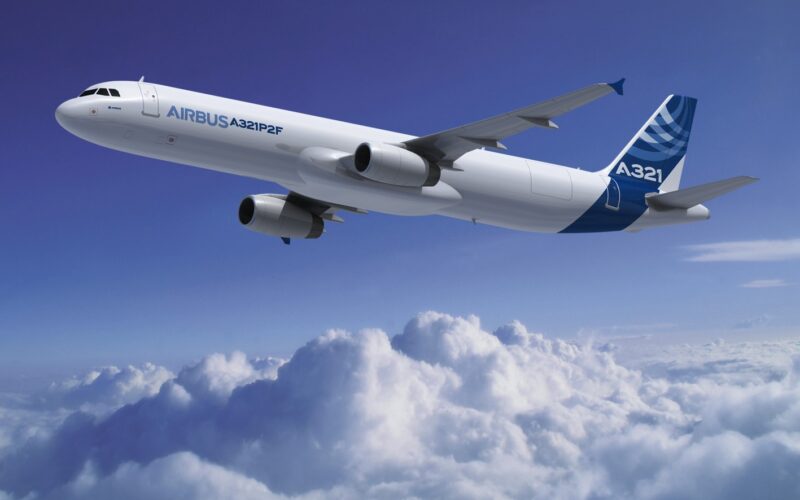The European Union Aviation Safety Agency (EASA) has canceled an airworthiness directive (AD) affecting Airbus A321 passenger-to-freighter (P2F) aircraft after discovering a calculation error on which the AD was based.
After the agency issued an airworthiness directive introducing stricter fuselage inspections for Airbus A321 P2F operators, it was subsequently found that the formula used to calculate the compliance timeframe in the directive was incorrect.
A further assessment, prompted by these observations and conducted by Elbe Flugzeugwerke and Airbus, confirmed that the additional stress on modified aircraft resulted in only a minimal reduction in the compliance timeframe when compared to the requirements outlined in the AD. Therefore, the potential safety concern for affected A321 aircraft had already been adequately addressed by a previous airworthiness directive issued on December 7, 2022.
What did the Airbus A321 P2F airworthiness directive say?
EASA introduced stricter fuselage inspections for the Airbus A321 P2F in the now-canceled Airworthiness Directive (AD) issued on September 12, 2023.
Back then, as part of the A321 XLR certification process and the alignment of fatigue and damage tolerance across the Airbus Single Aisle family, a new stress calculation was completed for the Center Wing Box (CWB) and slanted junction areas at fuselage frame 42.
The results of these stress analyses revealed elevated fatigue stress levels in these specific regions, which could potentially lead to the development of cracks under the current inspection procedures. Failure to detect and address this condition would have the potential to compromise the structural integrity of the fuselage.
At the time, EASA warned operators that if left unaddressed, this condition could affect the structural integrity of the Airbus A321ceo aircraft and, by extension, the A321 P2F.
In response to this situation, EASA issued an airworthiness directive mandating a one-time inspection of the affected aircraft parts and, based on the inspection results, the implementation of necessary corrective measures. Additionally, the directive included provisions for a single ferry flight.
What is the A321 P2F, and how many are there?
The A320/A321 P2F conversion program was launched in 2015 as a joint venture between ST Engineering, Airbus, and Elbe Flugzeugwerke. In this partnership, Airbus, as the Original Equipment Manufacturer (OEM), provides technical data, certification support, develops on-board computers, manages airframe engineering, and offers expertise in flight physics and flight testing. Elbe Flugzeugwerke, as the Supplemental Type Certificate holder, was appointed to lead the overall program and commercialization.
There is a total of 25 Airbus A321 P2Fs currently in service, flying cargo with 13 different airlines, according to data from ch-aviation.com. This number includes three aircraft that are currently in storage and three more that are undergoing maintenance.

